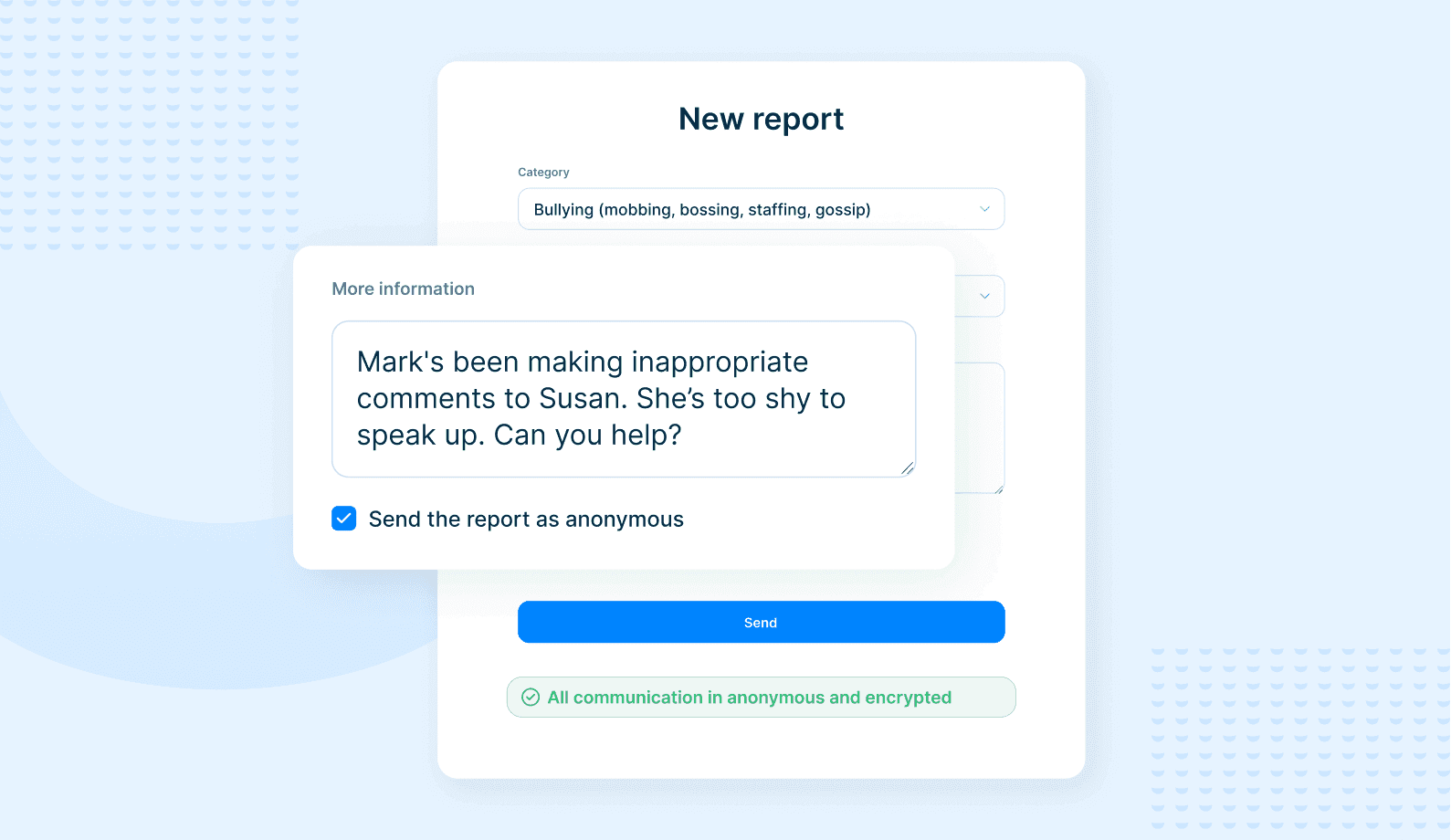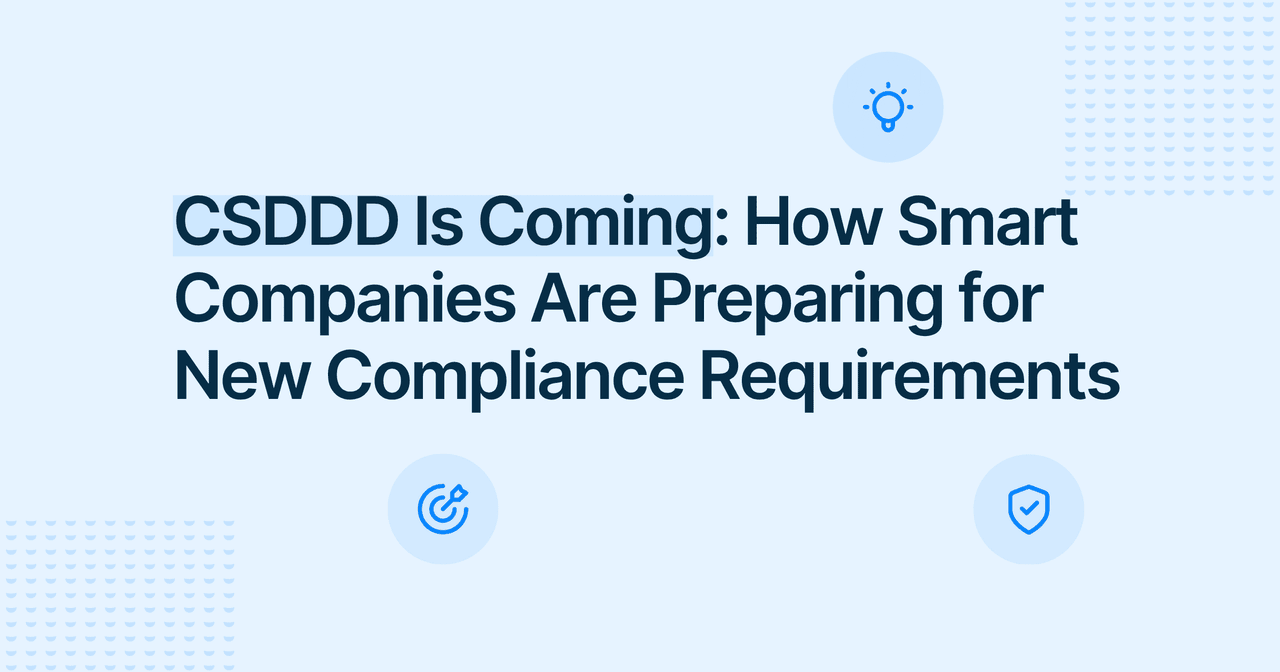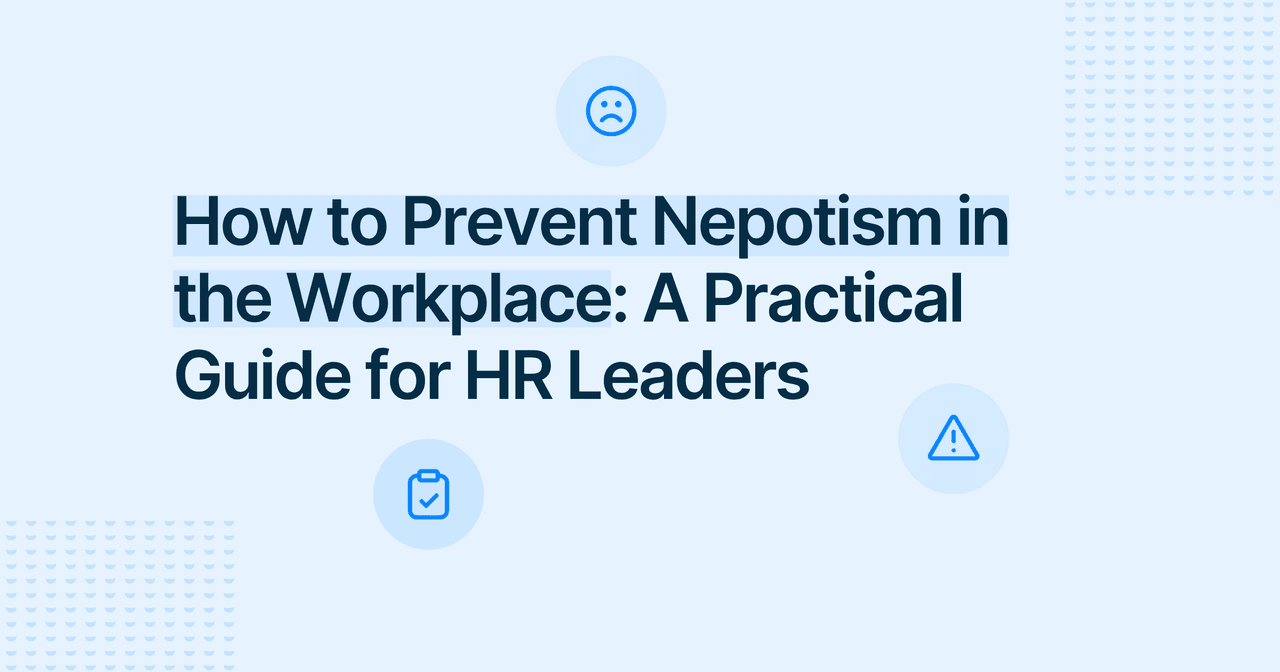



Try FaceUp Today
Set up anonymous reporting in minutes and start building a stronger, safer culture.
Whistleblowing

Yeva Bartkiv
Copywriter
Published
2025-01-27
Reading time
4 min


Table of contents
Subscribe to our newsletter
Bullying has no place in any work environment. Yet, workplace bullying remains an issue that affects countless employees across industries, creating hostile work environments that impact mental health, work performance, and overall well-being.
Knowing how to report workplace misconduct effectively and anonymously can make all the difference in dealing with workplace bullying. This guide will help you understand workplace bullying, explore your rights under employment law, and provide actionable steps to report bullying anonymously while protecting your safety and confidentiality.
Workplace mobbing involves repeated, harmful behaviors that can humiliate, intimidate, or undermine an employee. It is distinct from constructive feedback or performance evaluations because bullying behavior focuses on power dynamics and harm, not improvement.
Workplace bullying can take many forms, including:
Recognizing these behaviors is the first step in addressing workplace harassment and creating a safer work environment.
Bullying can significantly affect mental health, causing anxiety, depression, or even physical health issues. Addressing bullying is critical for your well-being and that of your colleagues.
A hostile work environment affects everyone. Reporting bullying helps reinforce a culture of respect and accountability, ensures that company policies align with anti-discrimination values, and protects all employees.
Workplace bullying may overlap with forms of workplace harassment, such as discrimination based on race, gender identity, sexual orientation, national origin, or religion. Such behavior is prohibited under the Civil Rights Act and other federal laws enforced by the Equal Employment Opportunity Commission (EEOC). Reporting can help enforce your rights under state and federal employment laws.
Begin by documenting the incidents. Create a detailed record of each event, including:
This documentation will strengthen your case when submitting a formal complaint or an anonymous bullying report.

Most companies provide several ways to report workplace bullying, such as:
An anonymous bullying reporting form ensures your privacy while giving your employer the information needed to investigate. Software like FaceUp simplifies this process and reassures employees that their concerns will be handled confidentially.

Federal laws, such as those enforced by the EEOC, prohibit retaliation against employees who report workplace harassment or bullying. Your employer cannot legally fire, demote, or ostracize you for filing a complaint.
Federal law, including Title VII of the Civil Rights Act, and various state laws protect employees from discrimination and harassment. These laws also provide pathways to legal action if your rights are violated.
If you are unsure about your protections, consulting your local Human Rights Commission or a legal expert can clarify. Additionally, visiting a government website (gov website) like the EEOC’s official page offers trustworthy resources and information on filing complaints.

Organizations should have robust workplace policies that define bullying, outline unacceptable behaviors, and describe the grievance procedure for handling complaints. This creates clarity and accountability.
Employers can empower employees by providing anonymous bullying reporting systems. These tools, such as FaceUp, ensure employees feel safe sharing their concerns, excluding the option of practicing onlooker behavior.
Employers should foster a work environment rooted in respect, inclusion, and zero tolerance for bullying or discrimination. This involves regular training on anti-discrimination and workplace harassment, ensuring all employees understand their rights under employment law.
Start by documenting the incidents and reviewing your company’s policies. Submit a formal complaint through your HR department or an anonymous report using whistleblowing tools.
If the bullying is based on race, gender identity, sexual orientation, or another protected characteristic, it may also qualify as workplace harassment under federal laws. The Equal Employment Opportunity Commission (EEOC) is a valuable resource for reporting such incidents.
Employers should prioritize mental health by offering Employee Assistance Programs (EAPs), maintaining anti-bullying policies, and ensuring that grievance procedures are clear, accessible, and transparent.
Workplace bullying thrives in silence, but you don’t have to face it alone. By understanding how to document incidents, navigate reporting channels, and use tools like anonymous bullying reporting systems, you can take control of your work environment and protect your rights.
Employers play a vital role, too, by fostering cultures that prioritize respect, inclusion, and accountability. Whether you're addressing bullying directly or creating policies to prevent it, every step counts.




Set up anonymous reporting in minutes and start building a stronger, safer culture.
Keep Reading

Alaa El-Shaarawi2025-11-148 min
Legal & Compliance

Alaa El-Shaarawi2025-11-137 min
Legal & Compliance

Alaa El-Shaarawi2025-11-139 min
Workplace Environment

Alaa El-Shaarawi2025-11-126 min
Whistleblowing